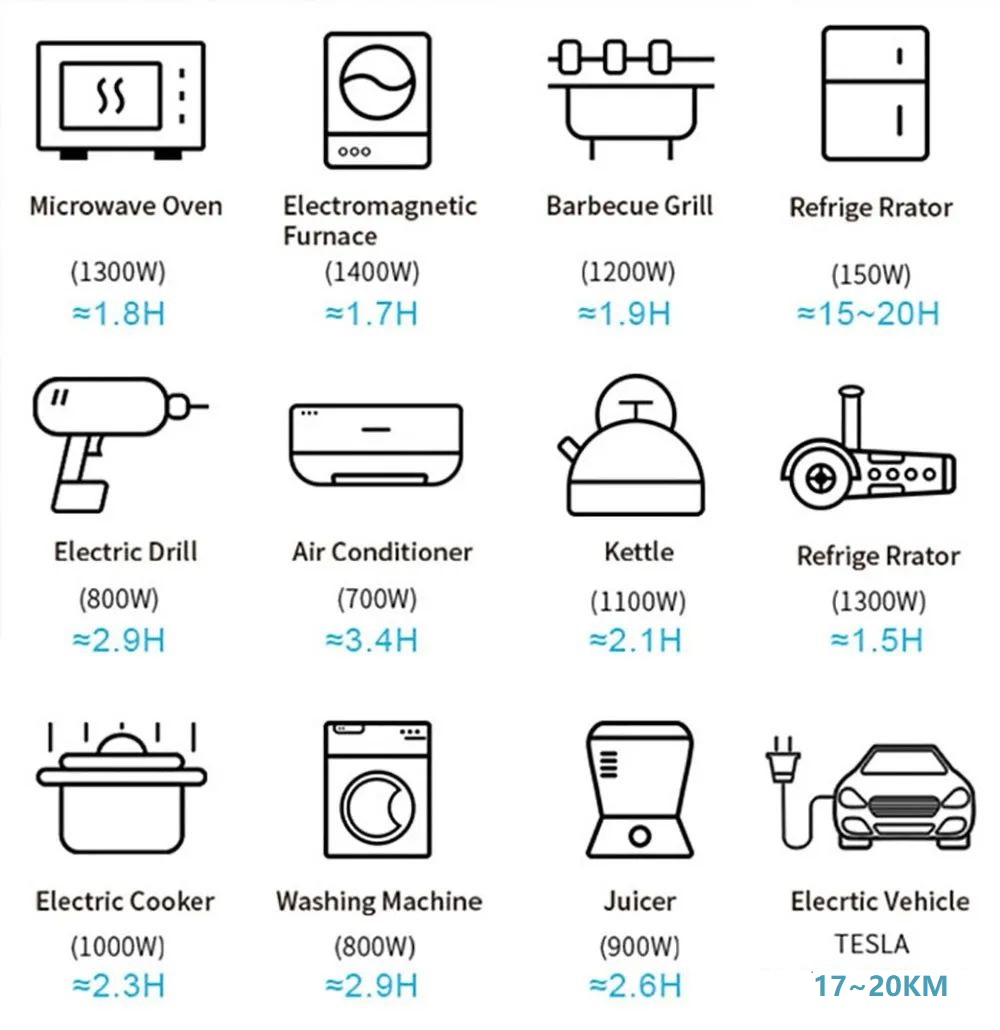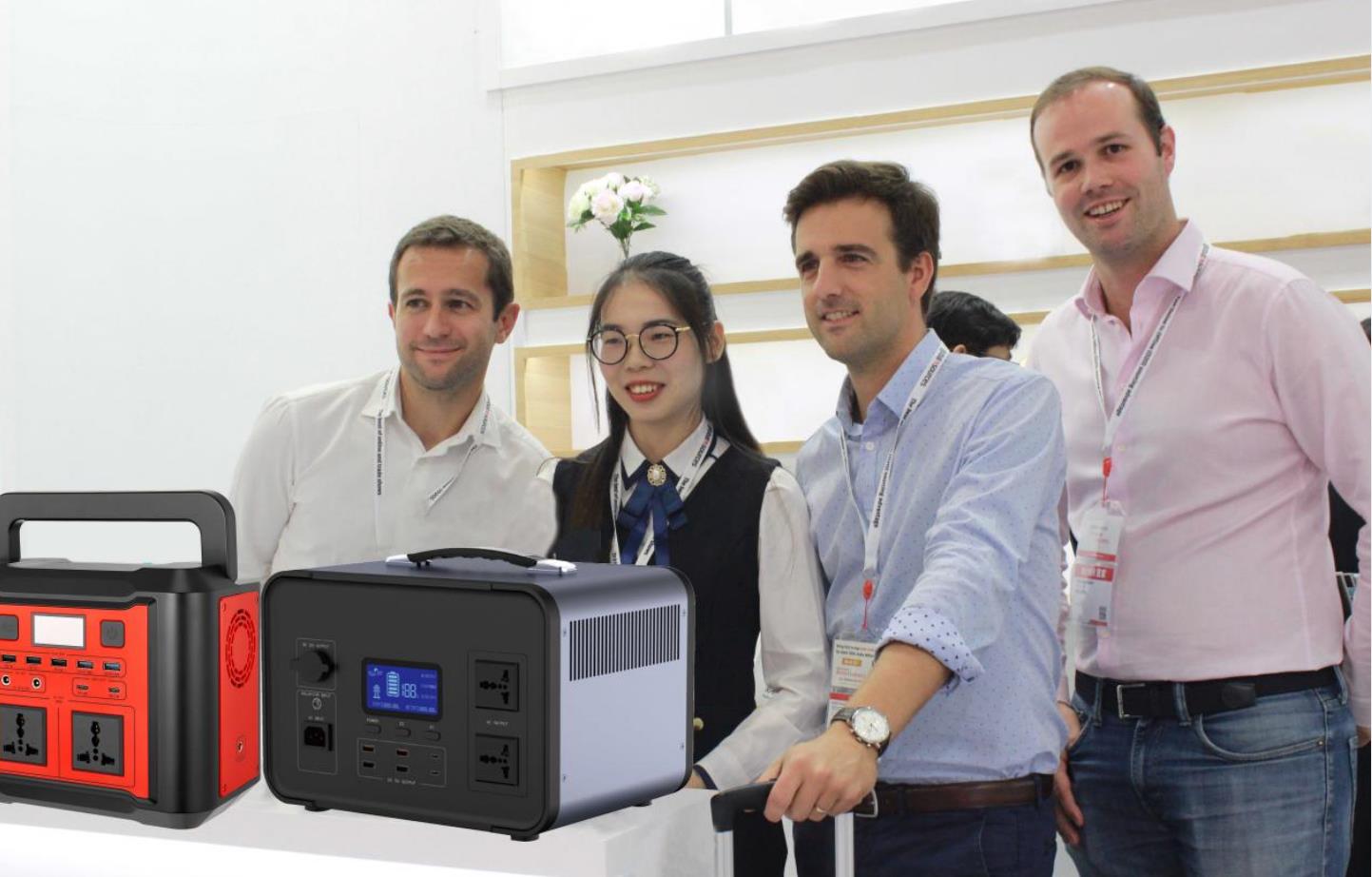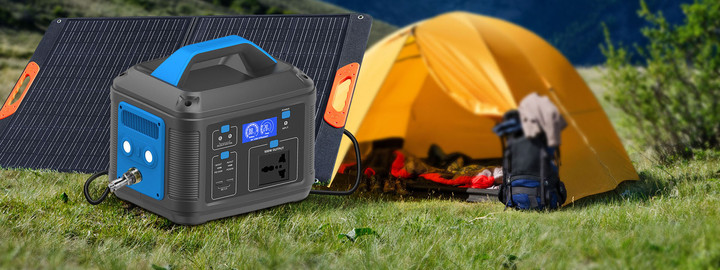2022 Portable Home Small Generator Purchase Strategy (Power Demand + Price + Purchase Website)
Generators are an important tool for emergency, especially in areas with frequent power outages, and when you want to use them for outdoor camping, mowing, etc. Nowadays, we say that household generators are generally small portable generators or inverters with stable voltages. Variable generators, although their power is different, but we need to pay special attention to its starting power and operating power when purchasing to meet the needs of our daily electrical equipment, generally speaking, generators with smaller power The noise is also relatively small, but it depends on the actual power demand of the group. In addition, the generator must not be bought indiscriminately, because a bad generator may cause some safety accidents, you should buy a brand generator with reliable quality!
1. How to choose a generator?
1.1, pay attention to the power (watts) provided by the generator.
Portable small camping generators range from 1,000 to 3,000 watts.
For home power generation, construction site power generation is generally a heavy-duty generator with a power of more than 10,000 watts. This heavy-duty generator is good enough to run the more important appliances in the home, or the more demanding power tools on a construction site.
So, if you're buying a home generator, then you'll need to estimate your electricity needs and come up with the total wattage required.
Step 1. List the appliances you need to run
This is what appliances want to turn on during an emergency power outage. Generally, refrigerators, freezers, sockets, and lighting are some of the items that need to be listed.
Step 2. Calculate the total power required by the selected electrical equipment
There are two points to pay attention to when calculating power: starting instantaneous power and normal operating power
Instantaneous power to start - is how many watts are needed to start the appliance, some appliances require more power to start, the most typical appliance is the window air conditioner.
Normal operating power - that is, rated power. For example, a typical 1,000-watt air conditioner consumes 2,200 watts at startup. After a few seconds of switching on, its energy demand will slowly drop to normal operating power. In this case, the alternating current needs to continuously provide 1,500 watts of operating power.
In the above case, a generator with 2,200 watts starting and 1,800 watts running, such as a Honda EU2200i, can run 10,000 BTU AC. However, even if the starting power requirements are met, it cannot be powered by a generator with 2,000 watts of starting power and 1,600 watts of operating power. Because the starting power provided by the generator is simply not enough.
Step 3. Choose a generator with slightly more power than required
There are three reasons why you should choose a generator with more power than normal use:
First, a high-power generator is always better than a low-power generator. You don’t want the generator to suddenly shut down due to overloading if you don’t pay attention during use. It’s better to buy a few hundred watts of power. generator.
Second, the full load operation of the generator will greatly shorten its service life.
Third, a generator with 100% load produces much more noise. Noise is a big concern, especially when using it for camping or RVs. So, if you calculate that your power needs total 1,600 watts, buy a generator that can provide at least 1,800 watts of rated power. If the selected appliance has a total operating wattage of 6800 and a starting wattage of 8200, use a generator rated for 7,500 wattage and a starting wattage of 9,500.
So how much power generator do you need to start your home appliances?
Generators rated at 5,000 to 7,500 watts can be used to run the most critical home appliances. Includes things like well pumps, refrigerators and freezers, and lighting circuits. A generator with about 7500 watts can run all of these appliances at the same time.
For portable, 3000 – 4000 watt generators are ideal.
In any case, the safest way is to calculate the wattage of the household equipment yourself, to be accurate, paying attention to two different loads:
The first, resistive loads: Resistive loads are very simple and require the same power to start and operate normally. Resistive loads such as: light bulbs, coffee machines, toasters, microwave ovens.
The second is reactive load: reactive load requires more power to start, but the power is much less during normal operation after starting. In special cases, the starting power is 3 times that of normal operation. Reactive loads include: refrigerator/compressor, stove fan, water pump, air conditioner.
For example, the following common electrical appliances, the former value is the operating power, and the latter value is the starting power:
1/2 HP Garage Door Opener 550W 1375W
Central A/C (10,000 BTU's) 1500W 3000W
Dishwasher - Hot Dry 1200W 3000W
Electric Drill - 1/2" 1100W 1250W
Hair Dryer- 1250 Watt 1250W
Microwave- 1000 Watts 1000W
Refrigerator/Freezer 550W 1350W

1.2, the type of generator
1.2.1, portable generators (portable generators, backup generators)
Portable generators are the most popular small generators on the market today and can be used to provide temporary power when or where it is needed.
Although the portable generator should look relatively small, its biggest feature is that most models have wheels and handles for easy transport. However, weights over 100 pounds may require two people to move them.
Portable generators use gasoline or propane as a fuel source. Therefore, never operate in an enclosed space, including a house, garage, or shed. Because carbon monoxide can rapidly
Scattering in confined spaces can cause dangerous accidents. When using it outdoors, it is also necessary to keep a safe distance from doors and windows to prevent the infiltration of exhaust gas and affect the indoor air quality.
This type of generator is more suitable for small appliances, or to start two or three small appliances, such as fans and lights. If you want to turn on the air conditioner, large appliances such as water heaters may be difficult.
But it can keep the refrigerator running while turning on the fan and a few lights. Remember to buy the equivalent wattage on the line.
Generally, electrical equipment can be plugged directly into the standard socket on the panel in front of the generator. In addition, many models have adapter plugs that provide up to 240 volts, and a manual transfer switch can power the home circuit.
1.2.2, inverter generator
Although inverter generators are generally portable and can be easily moved, they are a separate type because their working methods are technically significantly different from the other two generators.
Like most generators, inverter generators provide 120/240 volts AC power. They produce alternating current just like any other alternating current, but are converted to direct current (DC) and then back to alternating current (AC). The traditional generator is that the generator sends the voltage directly to the load without adjustment, while the inverter generator is output after AC-DC-AC, the output waveform and power factor are higher, and the THD of the output waveform is small, so it has a higher output. voltage quality.

The inverter generator is connected to a high-efficiency alternator. The voltage emitted by the generator is rectified and filtered by capacitors to output DC. The output DC is a smooth capacitor. After the DC is inverted, it outputs a standard sine wave voltage. and frequency, while the load size and voltage are adjusted by the inverter, which is independent of the engine speed, and the output is very clean. Compared with traditional generators, more and more electronic products such as computers, The microprocessor MCU core devices used in mobile phones, TVs, games, printers, DVD equipment, etc. are very sensitive to the quality and voltage of the power supply. If there is no stable power supply, the equipment will be damaged. Therefore, the sensitive electronic equipment of any application must be powered by a high-stability power supply, and inverter generator equipment is an ideal choice for them.
So, if you're mainly powering sensitive electronics like tablets, laptops, TVs, and other smart devices, you need these "clean" power sources and stable voltages to last longer.
However, due to its stable voltage and complexity, the price of inverter generators is also more expensive.
Inverter generators are also powered by gasoline, it also has the feature that it improves fuel efficiency and cleaner emissions, so you can reduce gasoline costs, on the other hand, it is also less noisy than portable generators, So inverter generators are generally more compact and sturdier than portable generators, and are increasingly popular in recreational activities such as camping.
Inverter generators can be used for camping power and also for home power. In conclusion, if you want a compact, fuel-efficient generator, consider an inverter generator; if you want to use it at home, you can choose a more robust model, which usually increases in weight and size, heavy-duty inverter generators weigh up to hundreds of pounds.
The cost of purchasing an inverter generator is generally higher than comparable portable generators, but in the long run, the fuel efficiency and reduced noise may make it worth it!
A light, entry-level inverter generator costs about $300, and a heavy-duty inverter capable of powering home appliances during a prolonged power outage costs about $3,000.


 stw14@stwpower.com
stw14@stwpower.com 
